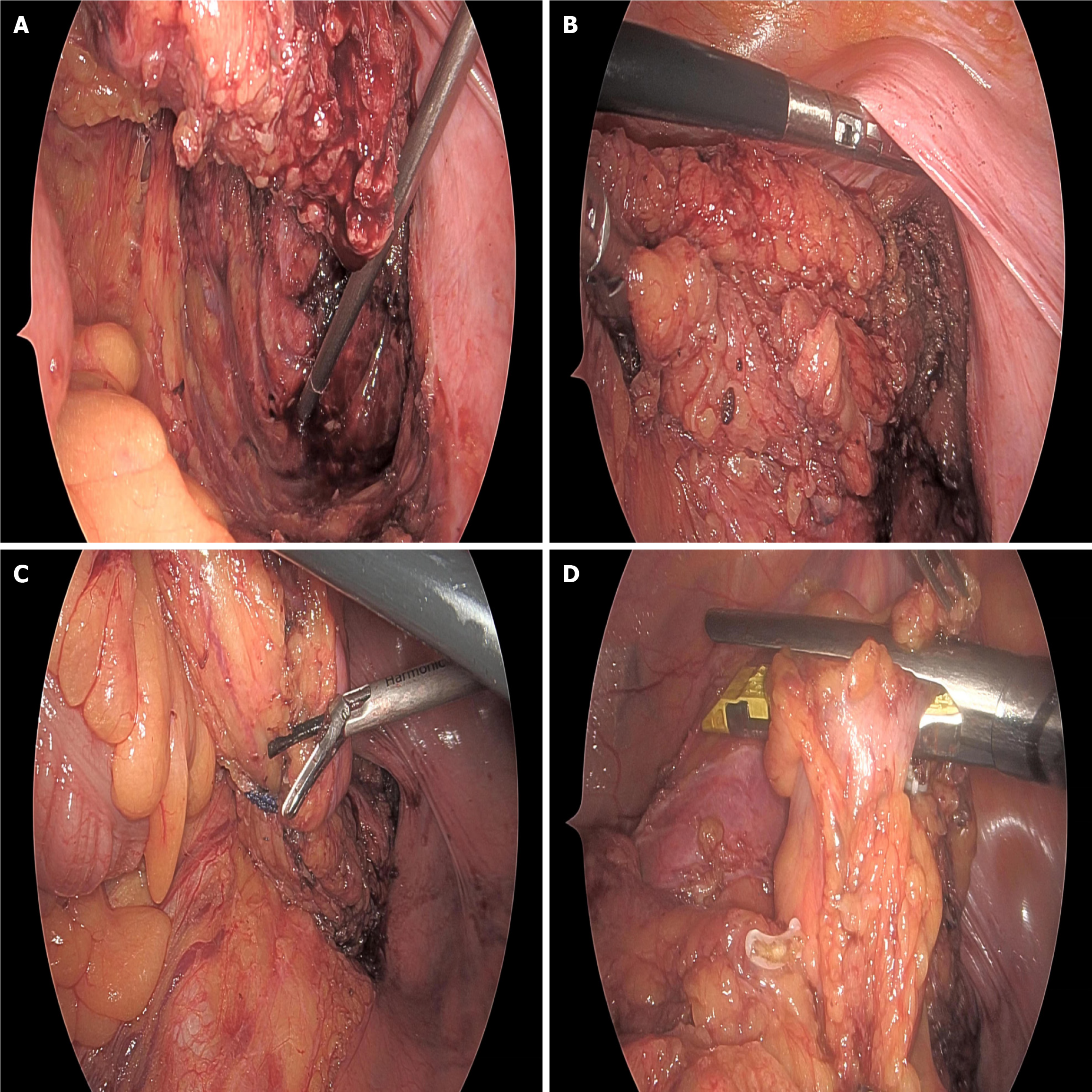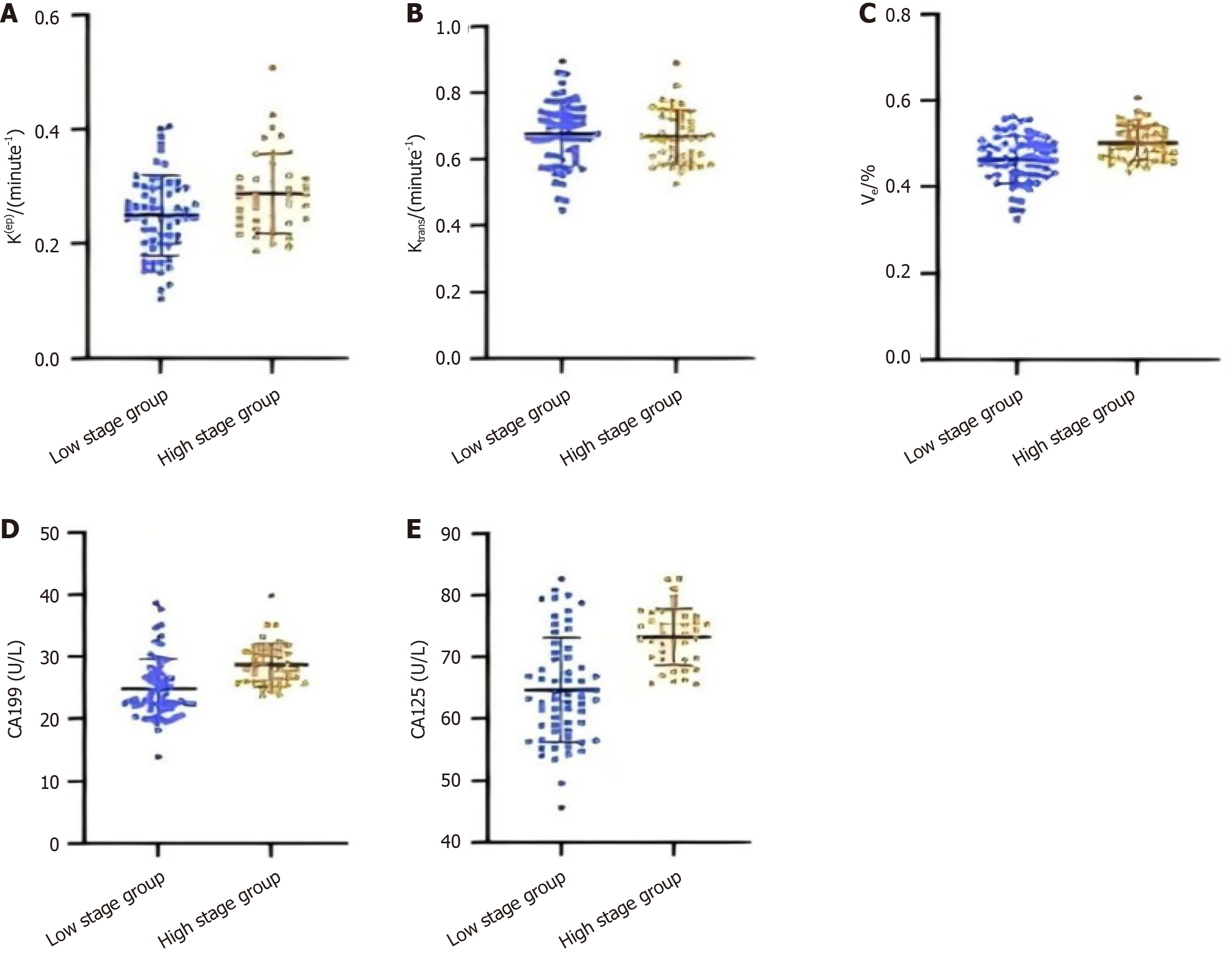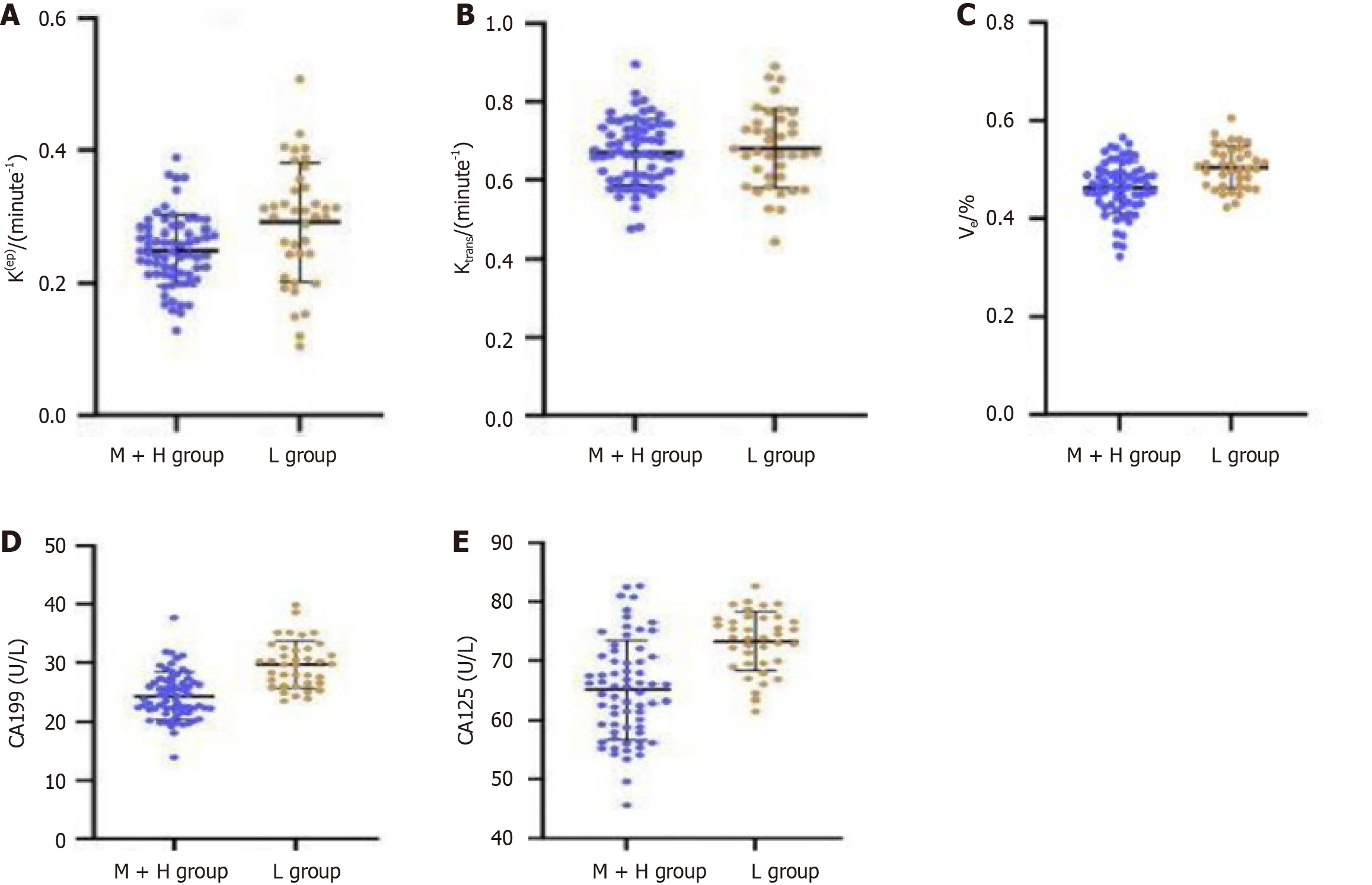Copyright
©The Author(s) 2025.
World J Gastrointest Oncol. May 15, 2025; 17(5): 103809
Published online May 15, 2025. doi: 10.4251/wjgo.v17.i5.103809
Published online May 15, 2025. doi: 10.4251/wjgo.v17.i5.103809
Figure 1 Rectal cancer resection surgery under the microscope.
A-D: The first two images show the initial exposure of the tumor, while the later images depict the ongoing removal of the cancerous tissue using specialized surgical instruments.
Figure 2 Dynamic contrast-enhanced-magnetic resonance imaging examination.
A-D: Poorly differentiated adenocarcinoma of the rectum, in which the tumor circulates the intestinal wall and infiltrates into the adventitial layer.
Figure 3 Comparison of dynamic contrast-enhanced-magnetic resonance imaging parameters and serum tumor markers in rectal cancer patients among different T stages.
A: Rate constant values of low and high T-stage groups; B: Volume transfer constant values of low and high T-stage groups; C: Volume fraction of extravascular extracellular space values of low and high T-stage groups; D: Serum carbohydrate antigen 19-9 levels of low and high T-stage groups; E: Serum carbohydrate antigen 125 levels of low and high T-stage groups in this study. Ktrans: Volume transfer constant; Kep: Rate constant; Ve: Volume fraction of extravascular extracellular space; CA: Carbohydrate antigen.
Figure 4 Analysis of dynamic contrast-enhanced-magnetic resonance imaging parameters and serum tumor markers in rectal cancer patients by differentiation status.
A: Examination of rate constant levels in poorly differentiated vs moderately to well-differentiated groups; B: Assessment of volume transfer constant levels in poorly differentiated vs moderately to well-differentiated groups; C: Evaluation of volume fraction of extravascular extracellular space levels in poorly differentiated vs moderately to well-differentiated groups; D: Analysis of serum carbohydrate antigen 19-9 concentrations in poorly differentiated vs moderately to well-differentiated groups; E: Review of serum carbohydrate antigen 125 concentrations in poorly differentiated vs moderately to well-differentiated groups. Ktrans: Volume transfer constant; Kep: Rate constant; Ve: Volume fraction of extravascular extracellular space; CA: Carbohydrate antigen; L: Low; M: Median; H: High.
- Citation: Wang Q, Zhang XY, Yang JF, Tao YL. Comparison of dynamic contrast-enhanced-magnetic resonance imaging parameters and serum markers in preoperative rectal cancer evaluation: Combined diagnostic value. World J Gastrointest Oncol 2025; 17(5): 103809
- URL: https://www.wjgnet.com/1948-5204/full/v17/i5/103809.htm
- DOI: https://dx.doi.org/10.4251/wjgo.v17.i5.103809












